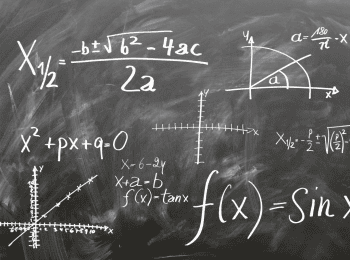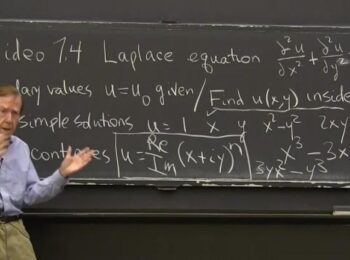Maybe you’ve glanced ahead at your calculus syllabus and notice that there will be a section about the Cantor set. Learning about the Cantor set can be intriguing for many students, but also very challenging.
In this article, we give you a basic introduction to the set and how to construct it. By introducing you to the basics, the goal is to help you feel more comfortable and familiar with the material when it’s presented to you in class. Our information can also be helpful to refreshing your memory if you’ve already learned about the set or just need to brush up on the basics.
Your Introduction To A Cantor Set
Before we jump into constructing the set and doing some hands-on work, let’s take a look at the background. If you’re like many students of mathematics, you might assume that most of the concepts that we learn and discuss in calculus have a history that dates back to centuries ago. This can be an easy assumption as much of what we learn feels like it’s always just been here.
Compared to other concepts, Cantor sets are relatively new and the concept was first introduced by a German mathematician, Georg Cantor in 1883. Cantor sets are sometimes referred to as the “Cantor comb” or the “no middle third set.” If you are unfamiliar with these terms, they will make more sense when we talk about constructing a set.
Like many concepts in calculus and other areas of mathematics, mathematicians may define the Cantor sets a little differently. In general, Cantor sets are closed and totally disconnected. They are a perfect subset of a closed interval, which is traditionally (0,1); we will go more in-depth on this a bit later.
Cantor sets are also the result of an iterative process, or getting the desired result by repeating a cycle of operations, and it’s often referred to as an example of a fractal (or neverending pattern).
You might be wondering why Cantor’s discovery holds any value today. Some mathematicians note that Cantor’s set is a tool that was created and used to disprove certain properties. Although mathematics may seem fairly stagnant, properties and concepts are constantly challenged and sometimes even proven wrong.
Many people had limited knowledge about what sets would measure to zero. While many assumed that cubed rational numbers were some of the only that could measure to zero, Cantor’s discovery proved that there are many numbers that can measure to zero.
Constructing A Cantor Set
As we noted before, cantor sets are sometimes referred to as a “cantor comb,” once you begin to construct one on your own or watch someone construct the set, you’re likely to see why it’s been given that nickname.
At first glance, you might think the early construction of a set looks something like your bracket for Fantasy Football; in some ways it does, but it’s a process that’s infinite. You don’t need many tools to construct a set, just a pen and paper or a dry erase board.
Start by drawing a line segment of no particular length. On one end write “0” and on the other end write “1.” This line segment (0,1) is your starting point.
The next step is to take out the middle third of your line segment; this is also known as the open middle third. After you take out the middle third you are left with one end of the closed line segment is 0 to ⅓ and the other is ⅔ to 1. All the points between ⅓ and ⅔ have been removed, but ⅓ and ⅔ remain.
You should continue to remove the open middle third of each closed line segment. The next set of results should be four shorter closed line segments with each one having a length of 1/9. So, one closed line segment will be 0 to 1/9, 2/9 to ⅓, ⅔ to 7/9, and 8/9 to 1; everything else in between is gone.
As you construct your set, you continue to break it down and remove the open middle third. After your four short closed line segments, you should have eight closed line segments that each have a length of 1/27.
While this may be difficult to visualize without actually drawing it out yourself or watching someone else construct a set, you probably have a good idea where this is going. You continue to break down the set by removing the open middle third and creating smaller closed line segments. This process goes on and on until your left with what many people call, “cantor dust.”

Image via Pexels
What happens to all the numbers that are removed? While they don’t appear in our set anymore, if you were to put them all together they would equal 1, which would bring us back to where we started (the original line segment of 0 to 1).
Now that we’ve given you an explanation on how to construct the set, let’s take a look at how you would write in down are part of your formula.
After you draw the your line segment, you can call this set . Once you remove the first middle third, you will call this set . Your subsequent sets should be , , and so on.
It’s important to note that at each step of the set, you are doubling the number of closed line segments. has one segment and has two segments. , which is also or 4 segments. has or 8 segments.
By the time you get down to you have or 1,024
segments. While this may seem like a lot, it’s really just the beginning.
The length of your first segment, , is zero because there are no gaps in the segment. Your second set, or , has a gap length of ⅓ and has a gap length is 1/9, which results in the total length of 5/9. The total gap lengths of is 19/27.
The Structure of Cantor’s Set
We’ve given you the basics of Cantor’s set, and you will undoubtedly dive deeper into the details during your calculus course. Depending on which level of class you take, you may only touch the basics like we have here or you will spend more time playing around with numbers.
Your instructor may even suggest removing the middle fourth of the line segment (rather than the middle third) just to see how your results vary. One of the unique features of Cantor’s set is that it is relatively easy if you don’t become too overwhelmed by the formula and keep certain things in mind, such as the structure of the set.
Here are some points to consider and remember, which may help you understand the set even better:
-
The set has no interior points, which leads it to “Cantor’s dust.” Why? The length is zero, which means it contains no intervals.
-
The set is bounded, which means it lives inside of the interval of (0,1)
-
The set is compact, which means that every task might require an infinite number of steps. It can, however, be solved with a finite number of steps.
-
The set has not isolated points
At first glance, Cantor’s set may look pretty easy to tackle and depending on your previous experience with calculus; you might pick up the concepts pretty quickly.
Like all concepts in math, Cantor’s set often takes a lot of practice and patience. Ask your instructor for help as soon as you don’t understand something. Many students spend time trying to catch up to what their instructor is explaining but are too nervous or frustrated to ask for help, especially in an advanced math course.
Don’t hesitate to reach out for other additional resources. Even if your instructor is one of the best, sometimes getting another perspective can be beneficial to learning something new.
If you don’t have access to additional resources, consider forming a study group or see if there are resources at your school (such as math tutoring) that can give you the extra attention you might need to succeed in understanding Cantor’s set and calculus overall.
The video may take a few seconds to load.Having trouble Viewing Video content? Some browsers do not support this version – Try a different browser.






